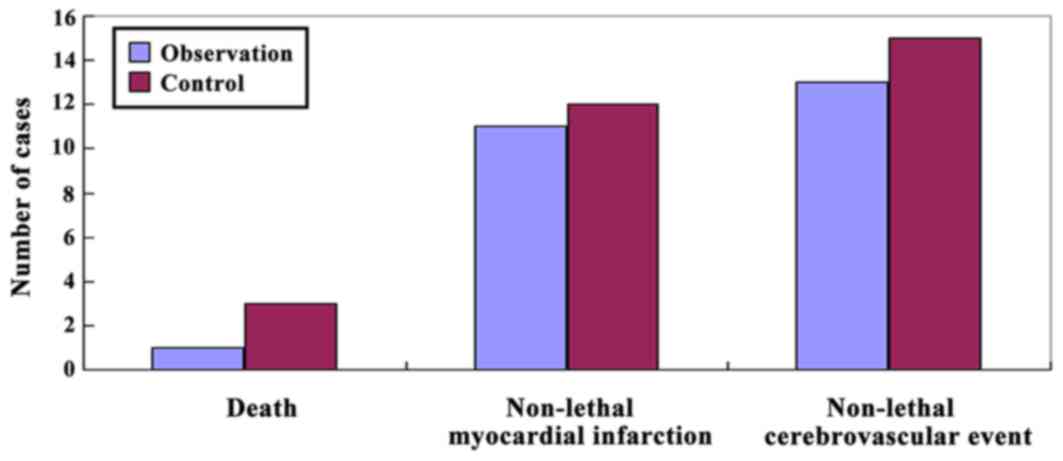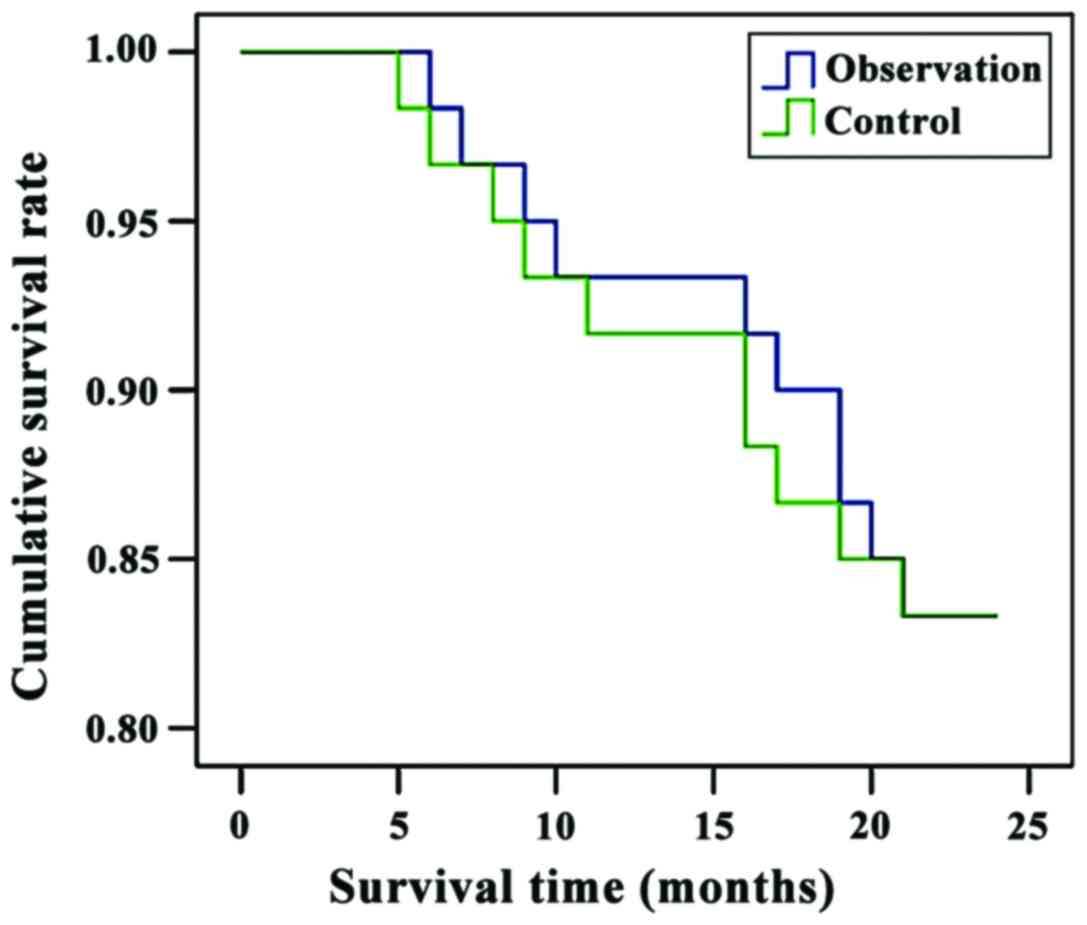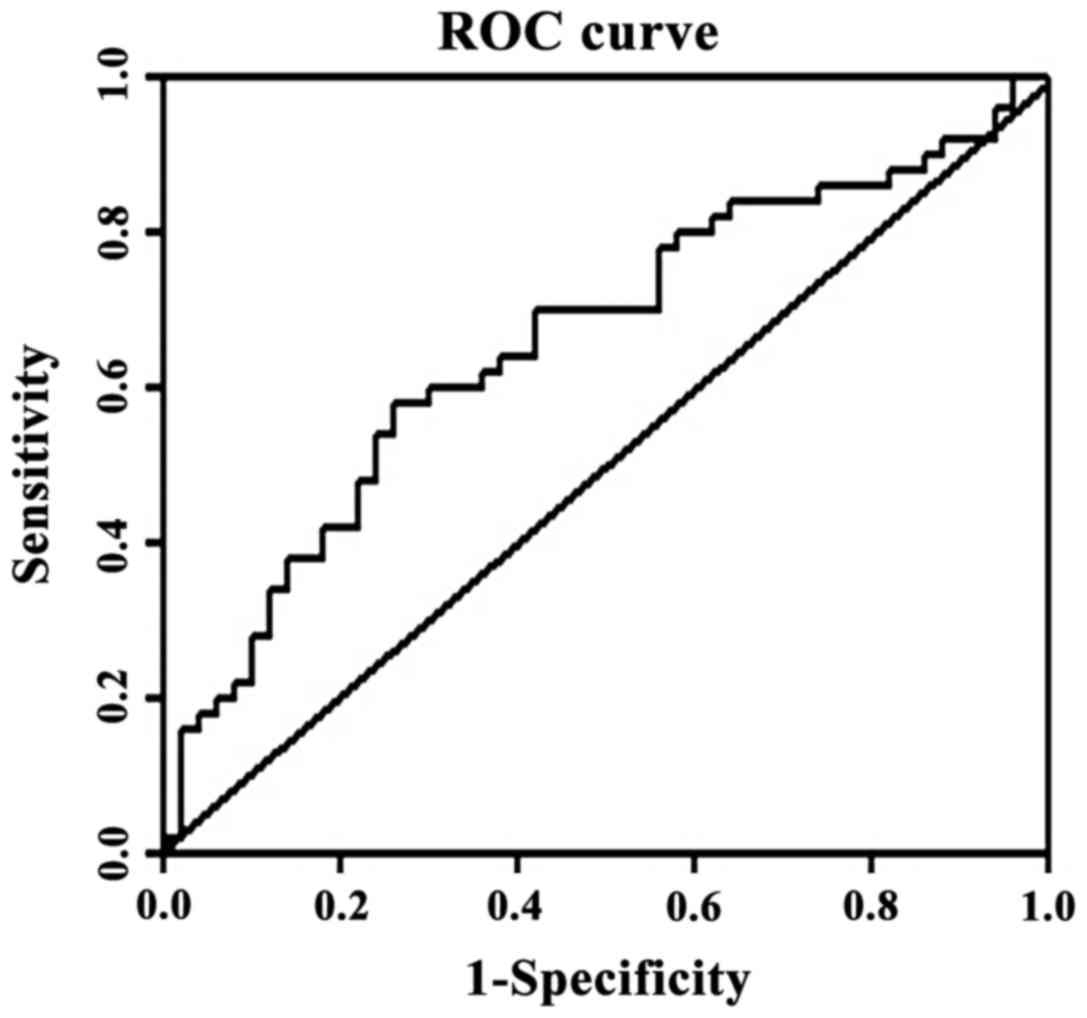Analysis of the clinical value of fractional flow reserve for prognosis evaluation of patients of percutaneous coronary intervention
- Authors:
- Published online on: November 1, 2017 https://doi.org/10.3892/etm.2017.5433
- Pages: 673-678
-
Copyright: © Zhao et al. This is an open access article distributed under the terms of Creative Commons Attribution License.
Metrics: Total
Views: 0 (Spandidos Publications: | PMC Statistics: )
Total PDF Downloads: 0 (Spandidos Publications: | PMC Statistics: )
Abstract
We investigated the clinical value of fractional flow reserve (FFR) for the prognostic evaluation of patients with percutaneous coronary intervention. We enrolled 120 patients who were admitted to the hospital to undergo percutaneous coronary intervention for acute coronary syndromes between May 2014 and June 2015. The 120 patients were divided into two groups, the observation group and the control group, according to the post-surgery level of FFR. Each cohort contained 60 patients. These patients were divided into the occurrence group (n=45) and the non-occurrence group (n=75), classified according to the occurrence of major adverse cardiovascular events (MACE). There were no statistically significant differences in the comparison of the occurrence rate of MACE within 30 days after surgery, such as lethal or non-lethal myocardial infarction or non-lethal cerebrovascular events, between the observational group and the control group (P>0.05). For the observation group, the 1-year survival cases were 56 with a survival rate of 93.3%, and 2-year survival cases were 50 with a survival rate of 83.3%. In the control group, the 1-year and 2-year survival cases were respectively 55 and 49 (survival rate of 91.7 and 81.7%). The occurrence rates of hyperlipidemia and ratio of patients with a history of smoking and drinking in the occurrence group were significantly higher than those in the non-occurrence group (P<0.05). The mean arterial pressure in the occurrence group was significantly higher than that in the non-occurrence group (P<0.05). Heart rate in the occurrence group is significantly faster than that in the non-occurrence group (P<0.05) and the stenosis degree in the occurrence group was significantly higher than that in the non-occurrence group (P<0.05). The left ventricular ejection fraction (LVEF) before surgery in the occurrence group was significantly lower than that in the non-occurrence group (P<0.05). There were no remarkable differences in comparison of the pre-treatment FFR between the occurrence group and the non-occurrence group (P>0.05), but the post-treatment FFR in the occurrence group was significantly lower than that in the non-occurrence group (P<0.05). Increased blood fat, a history of smoking and drinking, augmented mean arterial pressure, accelerated heart rate, severe coronary artery stenosis and the remarkably decreased LVEF were all identified as independent risk factors leading to major adverse myocardial events. The sum of specificity and sensitivity of treatment reached the peak when the post-surgery FFR was 0.875, the calculated sensitivity was 82.4%, and the specificity was 50.8%. In conclusion, measurement of FFR after percutaneous coronary intervention could not only effectively evaluate the target vessel revascularization, but also predict the occurrence of major adverse myocardial events 1 year after surgery, which could serve as the guidance for clinical treatment.












